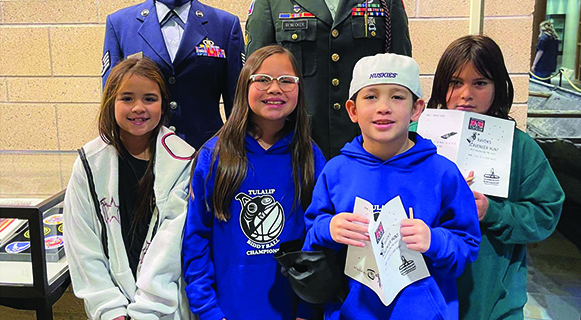
By Micheal Rios, Tulalip News
Devoted educators of Marysville School District’s Indian Ed. Department, Quil Ceda Elementary and Hibulb Cultural Center are determined to make education great again. MEGA, if you will.
The united effort is intended to raise cultural awareness, fulfilling a key aspect of the late John McCoy’s since time immemorial legislation, while creating an inspirational atmosphere at the intersection of learning and fun.
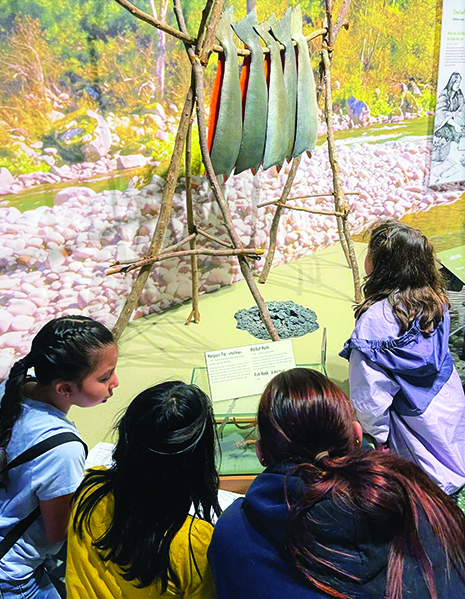
Quil Ceda 4th graders were ushered into Hibulb’s makeshift longhouse where they were welcomed by members of the Indian Ed. Department, which included Matt Remle, Terrance Sabbas, Zee Jimicum, Doug Salinas, Tony Hatch and Ian LaFontaine on this particular Monday. After they each gave a brief introduction of their family background and tenure within education, they stood poised with handmade drums and sang several songs. They were followed by a 15-minute video that gave a board leader view of the Tulalip Tribes history.
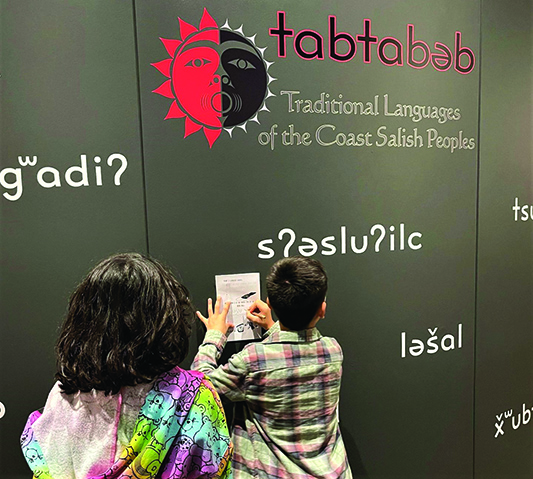
Then, the real fun began. Longhouse doors were opened and students were each given a Raven’s Scavenger Hunt to complete while exploring the cultural center’s history-filled exhibits.
“I think it’s so important that we provide opportunities to educate all children here at Hibulb. By sharing our culture and history openly and authentically, we help bridge gaps in cultural understanding that Tulalips and non-Tulalips may have,” explained 23-year-old group tour specialist Courtnie Reyes.
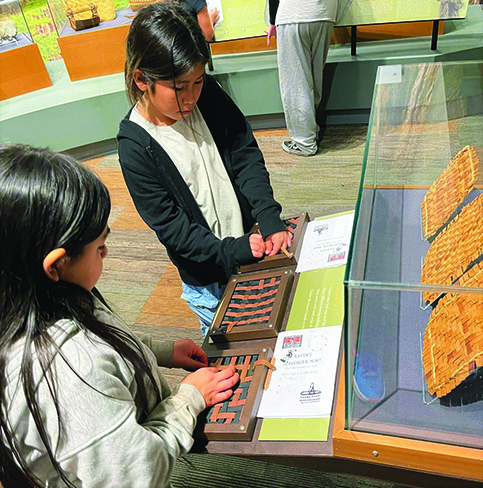
“I went to Quil Ceda as a child and, back then, our cultural education was more based on the broader sense of what it means to be a Native American. We learned of historical figures from other tribes, but I don’t really remember any being Tulalip specific,” she continued. “I’ve always wanted to be an educator, so today I’m proud to be a part of sharing the stories of so many important Tulalip figures who laid the foundation we’ve built so much upon.”
Each aspect of the Raven’s Scavenger Hunt is meticulously designed to captivate students’ imagination while they are immersed in various aspects of Tulalip history; from fishing and hunting and gathering practices to the importance of harvesting cedar and its many practical applications to central tenants of being canoe people and children of the salmon.
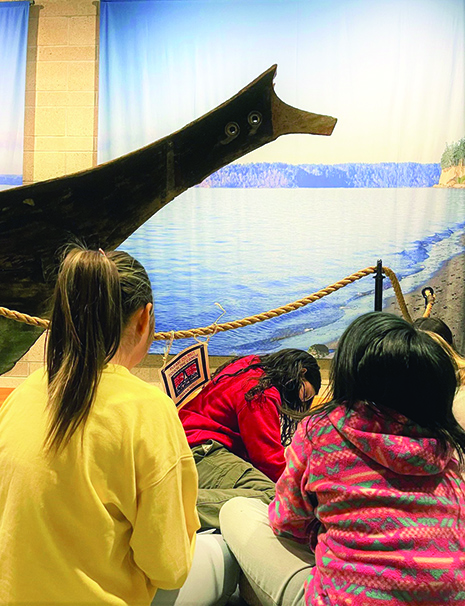
Present to assist chaperone the children as they navigated their scavenger hunt was members of the Marysville Pilchuck high school’s United Native Club. Tenth grader Monet Clemons serves as vice president and says collaborative education efforts at Hibulb is something she wished were possible when she were in elementary, but is so excited to see now widely available for local students.
“When I was younger, I didn’t really have this kind of hands-on experience with culture. I was told I was Native, but never got to learn what it meant to be Tulalip,” Monet shared after helping a group of students answer the question ‘What is the most innermost layer of the cedar tree called?’. “Now, to be here and help the next generation learn what it means to be Tulalip and all the ways we embrace culture is pretty cool.
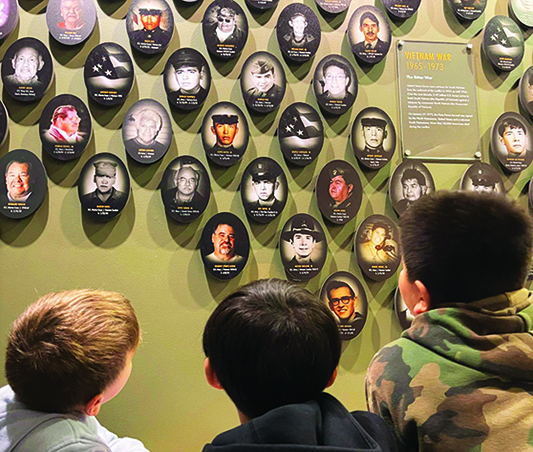
“Bringing elementary-aged kids here is a good age because they are so curious to learn and we can see just how excited they are to see key parts of our culture, like the canoes and fishing village. Being here and experiencing everything the museum has to offer opens their world more and lets them view our culture in a real meaningful way versus just reading about it in a textbook,” she added.
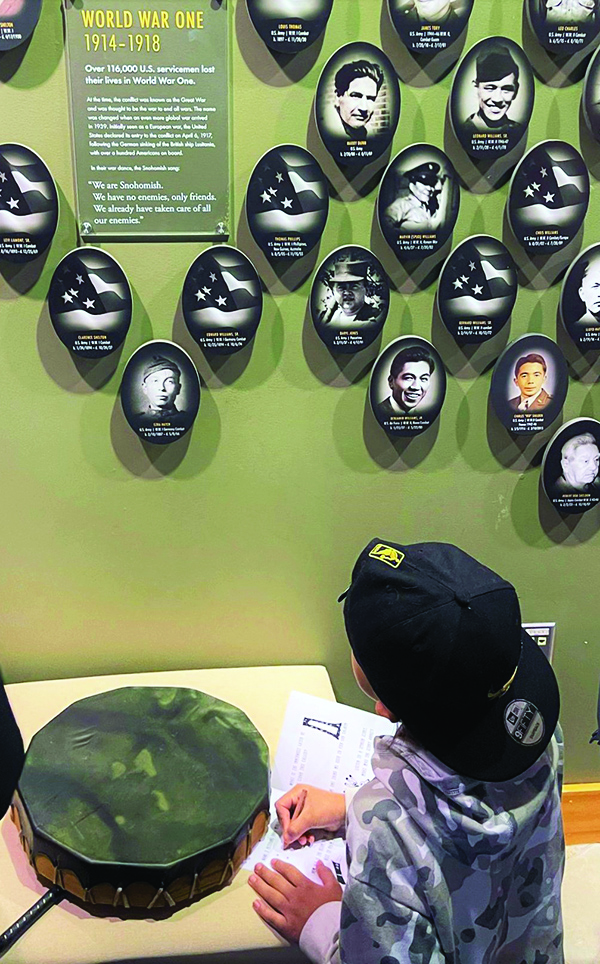
The meaningfulness went even deeper for several young Tulalip students who, while viewing the veterans wall, suddenly found themselves overcome with excitement staring at a much younger version of their grandpa Ray Fryberg. They were quick to tell anyone within ear shot, “That’s my grandpa!” while pointing to the portrait of the Vietnam veteran.
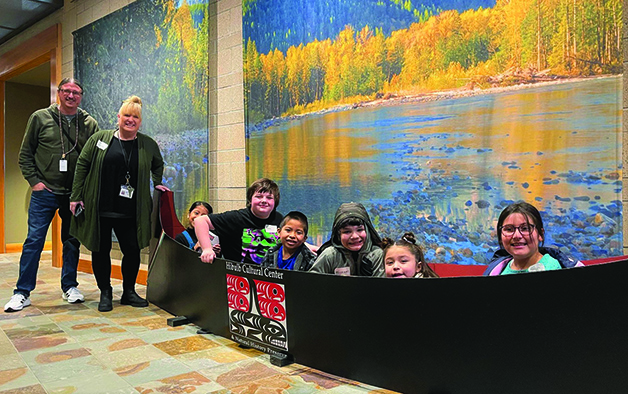
Following completion of the scavenger hunt, the children gathered one more time in the longhouse. This time, they were divided up into dancers, singers and drummers. They quickly learned the Spokane Happy Dance and eagerly performed it to perfection to the joy of their onlooking educators. The moment served as a living embodiment of what it truly means to make education great again.